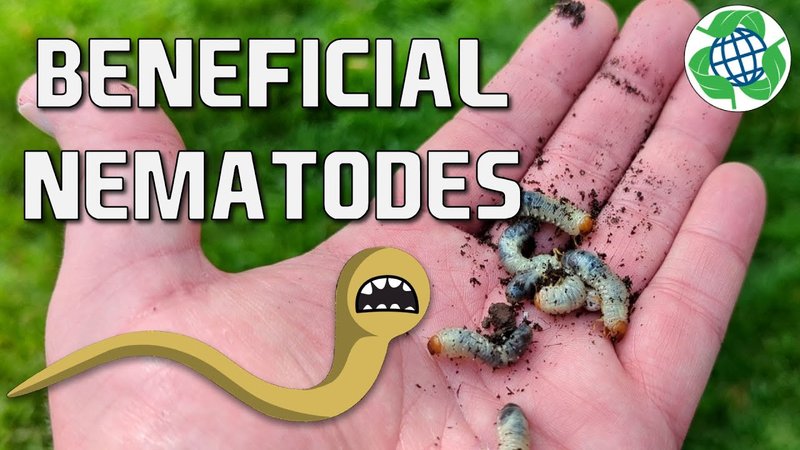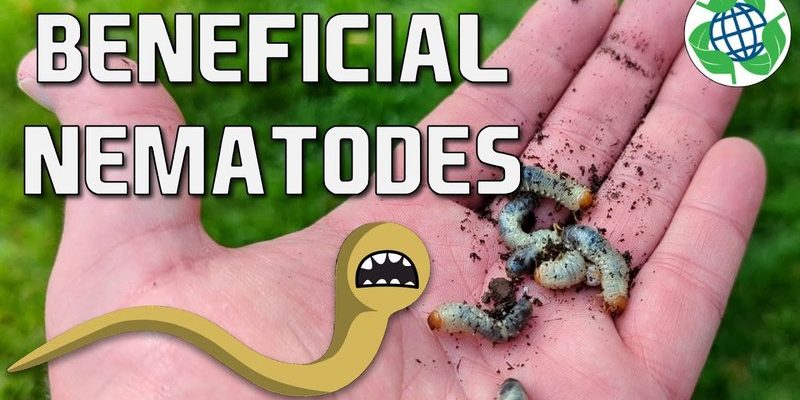
When hammerhead worms invade, they can leave your garden looking sad and unhealthy. Luckily, beneficial nematodes, like those from the brand **NemaEasy**, can step in and take care of the problem. If gardening is your passion or you just want to keep your plants thriving, figuring out how to use these nematodes effectively can be a game changer.
What Are Hammerhead Worms?
Hammerhead worms, or _Bipalium_ species, are fascinating yet damaging creatures. They’re named for their distinct, flat heads that resemble a hammer—hence the name. These worms can grow up to a foot long and come in various colors, often seen gliding across the soil or hiding under leaves.
They might look harmless, but here’s the thing: hammerhead worms are carnivorous and love to munch on beneficial soil organisms, especially earthworms. This can upset the delicate balance in your garden. Think of them as the *bullies in the playground*. They take away the resources your plants need to grow, leaving your garden in distress.
How Do Beneficial Nematodes Work?
You might be wondering how these tiny nematodes can tackle a problem as big as hammerhead worms. Well, beneficial nematodes are microscopic roundworms that live in the soil. They’re natural predators to many pests, and they come with a free ticket—no chemicals required. When the nematodes encounter hammerhead worms, they burrow into their bodies and release bacteria that ultimately kill them.
Imagine a tiny army invading a fortress. The nematodes break down the defenses of the hammerhead worms, making it easier for them to win the battle. This method of pest control not only keeps your garden safe but also helps maintain a healthy ecosystem.
Choosing the Right Beneficial Nematodes
Now that you know how beneficial nematodes can help suppress hammerhead worms, let’s talk about selecting the right ones. There are several strains available, and it’s important to choose one that targets your specific problem effectively.
When picking nematodes, consider the following:
- Species: Look for nematodes like _Steinernema_ or _Heterorhabditis_, which are known to attack various soil pests.
- Application method: Some nematodes come in granular form, while others are liquid. Choose based on how you prefer to apply them—liquid might be easier for garden sprays.
- Quantity: Depending on the size of your garden, you’ll need different quantities. More nematodes might be necessary for larger areas.
By carefully selecting the appropriate nematodes, you set the stage for a successful battle against those pesky hammerhead worms.
How to Apply Beneficial Nematodes
Applying beneficial nematodes is usually straightforward, but there are a few steps you should follow to ensure they’re effective. Here’s the step-by-step process:
1. **Prepare the Soil**: Before application, water your garden thoroughly. This creates a moist environment that helps nematodes move through the soil.
2. **Mix Nematodes with Water**: If you’re using a liquid form, mix the required amount of nematodes in a bucket of water. If granular, follow the instructions on the packaging.
3. **Apply the Mixture**: Use a spray bottle or garden sprayer to apply the nematode mixture evenly across the affected areas of your garden.
4. **Water Again**: After applying, lightly water the area to help the nematodes settle into the soil.
Following these steps will ensure that you give the nematodes the best fighting chance against the hammerhead worms.
When to Apply Nematodes
Timing is everything in gardening, especially when it comes to applying beneficial nematodes. The best time to introduce them is when the soil is warm, typically during spring or early summer. Hammerhead worms tend to be more active during this time, making it the ideal moment to strike.
Also, avoid applying nematodes during extreme temperatures, whether hot or cold. They thrive in conditions between 50°F and 90°F, so keep that window in mind.
You might want to monitor your garden regularly after application to see how the situation changes. This helps you understand whether your nematodes are making an impact or if a second application is necessary.
Benefits of Using Nematodes Over Chemicals
One of the best parts about using beneficial nematodes is that they are a natural solution. Unlike chemical pesticides, which can harm beneficial insects and plants, nematodes are environmentally friendly. Here are a few benefits:
- Safe for the environment: Nematodes don’t harm non-target organisms, making them a safer choice for your garden ecosystem.
- Non-toxic: They don’t leave harmful residues like chemical pesticides do, so you can feel good about what’s in your garden.
- Long-lasting effects: Once introduced, nematodes can continue to work in the soil, helping keep pests at bay for a longer duration.
By choosing beneficial nematodes, you’re not just solving a problem; you’re also promoting a healthier gardening environment.
Using beneficial nematodes to suppress hammerhead worms is like drafting your gardening allies. With these tiny nematodes on your side, you can effectively tackle a significant problem without resorting to harmful chemicals. They’re natural protectors that keep your garden flourishing while ensuring that the balance of your ecosystem remains intact.
So next time you notice those strange flatworms in your soil, remember there’s a solution—a tiny army of beneficial nematodes ready to swoop in and save the day. By understanding how to use them properly, you can reclaim your garden and create a vibrant space for your plants to thrive. Happy gardening!

